|
|
|
 |

 |
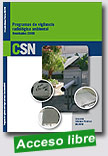 |
Programas de vigilancia radiológica ambiental. Resultados 2009
Consejo de Seguridad Nuclear, 2011, 176 p.
La vigilancia radiológica del medio ambiente en España se realiza mediante un sistema de redes, constituido por una red de vigilancia en el entorno de las instalaciones y una red nacional. En el caso de las instalaciones, los titulares son los responsables de la realización de sus Programas de Vigilancia Radiológica Ambiental (PVRA) siguiendo las directrices del CSN, en función del tipo de instalación y algunas características del emplazamiento tales como demografía, usos de la tierra y el
|
agua, así como hábitos de la población. El CSN ejerce el control regulador mediante inspecciones periódicas, evaluación de los datos obtenidos y realización de programas independientes, bien de modo directo o mediante encomienda a las comunidades autónomas, lo que permite confirmar su ejecución y supervisar la calidad de los resultados. Por su parte, la Red de Vigilancia Radiológica Ambiental no asociada a instalaciones (Revira), se distribuye por todo el territorio nacional y es gestionada por el Consejo. Está constituida por una Red de Estaciones de Muestreo (REM) y por una Red de Estaciones Automáticas de medida en continuo (REA). Revira proporciona información radiológica sobre la radiactividad de la atmósfera, del suelo, de las aguas (potables, continentales y marinas) y de los alimentos, disponiéndose de resultados desde el año 1993. Los programas de muestreo y análisis radiológico se adaptan a las recomendaciones que establece la Comisión de la Unión Europea con el fin de facilitar a los Estados miembros el cumplimiento de los artículos 35 y 36 del Tratado de Euratom. Los datos obtenidos en todos los programas de vigilancia son remitidos al CSN y evaluados en el Área de Vigilancia Radiológica Ambiental (AVRA). Un resumen de los mismos se incluye en los informes anuales al Congreso de los Diputados y al Senado; parte de estos datos se remiten también a la Comisión de la Unión Europea, de acuerdo con lo establecido en el artículo 36 de Euratom, y a otras instituciones nacionales e internacionales.
En el presente documento se describen brevemente las principales características de las redes y programas de vigilancia radiológica ambiental en España y los resultados de los mismos obtenidos en la campaña de vigilancia del año 2009. Así mismo se presenta la proyección temporal de los valores radiológicos más representativos en los últimos veinte años para el caso de las centrales nucleares, entre diez y quince años para la vigilancia nacional, o en otro caso, desde el primer año en que se disponga de datos. Valores de años previos a los aquí presentados pueden consultarse en ediciones anteriores de esta misma publicación. Así mismo, se incluye un anexo con la actividad emitida a través de los efluentes de centrales nucleares y de las instalaciones del ciclo del combustible durante el año 2009.
Extraído de:
http://www.csn.es/images/stories/publicaciones/
unitarias/informes_tecnicos/pvra2009.pdf
|
 |
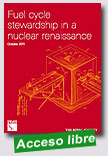 |
Fuel cycle stewardship in a nuclear renaissance
The Royal Society, October 2011, 79 p.
The Nuclear non-proliferation project considered the potential of new technologies and governance best practices to make the nuclear fuel cycle more secure and proliferation resistant, with a particular focus on the management of spent fuel (including interim storage, geological disposal, and reuse).
Key points of the report include: A nuclear Davos. Global governance does not reflect the international reality of the nuclear industry. A CEO-led, World Nuclear Forum is now timely so that CEOs and government leaders can explore their
|
respective views on the future development of nuclear power and responsibilities for non-proliferation and nuclear security; No time for complacency. As demonstrated by the attention to nuclear safety post-Fukushima, avoiding complacency is vital to maintain confidence in a nuclear renaissance. An integrated approach to safety, security and non-proliferation risk assessment and management needs to feature more prominently at all levels of nuclear decision making from the design and regulation of nuclear facilities to the corporate governance of nuclear organisations; Safeguardability remains a R&D priority. There is no proliferation proof nuclear fuel cycle. The dual use risk of nuclear materials and technology and in civil and military applications cannot be eliminated. The technical expertise of the International Atomic Energy Agency plays a central role in managing this dual use. Improving the efficiency and effectiveness of international safeguards remains a priority for non-proliferation Research and Development (R&D); Strategic planning from cradle to grave. The management of spent fuel and radioactive waste must no longer be an afterthought. The entire fuel cycle needs to be considered from cradle to grave. Best practice based on 50 years of operational experience must be implemented. International options for spent fuel management should not be overlooked. Comprehensive cradle to grave fuel cycle services that couple the supply of fresh fuel with the management of spent fuel and radioactive wastes could be attractive to some countries in preference to developing their own national fuel cycle facilities. This could provide a key non-proliferation incentive that offers major security benefits; Reversing the UK’s declining role in the development of nuclear power. The UK’s long term ambitions for nuclear power need to be clearly articulated and implemented. Enhanced support for the UK’s research infrastructure is also necessary if the UK is to remain influential in debates on non-proliferation and nuclear security.
Extraído de:
http://royalsociety.org/policy/projects/nuclear-non-proliferation/report/ |
 |
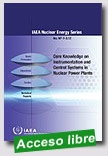 |
Core Knowledge of Instrumentation and Control Systems in Nuclear Power Plants
IAEA Nuclear Energy Series, 2011, 141 p.
This publication is intended to present a basic overview of instrumentation and control (I&C) systems in nuclear power plants (NPPs) and to serve as a reference guide on the subject. Furthermore, it provides an explanation of the significant role I&C systems have in maintaining and improving safety, plant performance and economic returns. Numerous publications have been prepared to address these issues; the present publication places those technical publications within the context of a global view of NPP I&C systems and their life cycles. |
Extraído de:
http://www-pub.iaea.org/books/IAEABooks/8490/Core-Knowledge-of-Instrumentation-and-Control-Systems-in-Nuclear-Power-Plants
|
 |
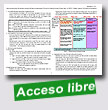 |
|
At the first "Government and TEPCO's mid-to-long term countermeasure meeting" today, the "Mid-and-long-Term Roadmap towards the Decommissioning of Fukushima Daiichi Nuclear Power Units 1-4, TEPCO" was approved officially. This means we will take the first step toward the completion of the decommissioning over the next forty years.
From now on, we will shift our approach from the stabilization of the plant to the maintenance of stable condition. Therefore, we will take several countermeasures such as the removal of the spent fuel from the pool, the removal of fuel debris and so on.
We continue to make concerted efforts with understandings and supports from the government, Fukushima prefecture and other authorities to achieve this roadmap target. More importantly, we continue to make every effort to enable evacuees to return to their homes as early as possible and eliminate the anxieties of the people in Fukushima and whole nation as soon as possible.
Extraído de:
http://www.tepco.co.jp/en/index-e.html |
 |
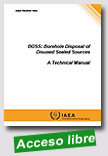 |
BOSS: Borehole Disposal of Disused Sealed Sources
IAEA TECDOC Technical Manual, 2011, 106 p.
The management of disused radioactive sources is the responsibility of individual Member States. Accordingly, interest in technologies to allow the safe, secure and sustainable management of disused sealed radioactive sources is growing. This publication is a technical summary on preparing and planning predisposal and disposal activities with regard to the BOSS (borehole disposal of disused sealed sources) system, a safe, simple and cost effective solution for the management of disused sealed radioactive sources. It advises potential |
implementers and decision makers on the implementation of BOSS, which is expected to provide Member States with a successful tool to contribute to the safety and security of current and future generations.
Extraído de:
http://www-pub.iaea.org/books/IAEABooks/8207/BOSS-Borehole-Disposal-of-Disused-Sealed-Sources-A-Technical-Manual |
 |
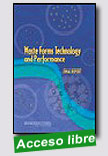 |
Waste Forms Technology and Performance: Final Report
The National Academic Press, 2011, 308 p.
The Department of Energy's Office of Environmental Management (DOE-EM) is responsible for cleaning up radioactive waste and environmental contamination resulting from five decades of nuclear weapons production and testing. A major focus of this program involves the retrieval, processing, and immobilization of waste into stable, solid waste forms for disposal. Waste Forms Technology and Performance, a report requested by DOE-EM, examines requirements for waste form technology and performance in the cleanup program. The report
|
provides information to DOE-EM to support improvements in methods for processing waste and selecting and fabricating waste forms. Waste Forms Technology and Performance places particular emphasis on processing technologies for high-level radioactive waste, DOE's most expensive and arguably most difficult cleanup challenge. The report's key messages are presented in ten findings and one recommendation.
Extraído de:
http://www.nap.edu/catalog.php?record_id=13100
|
 |
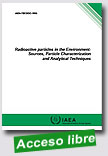
|
Radioactive Particles in the Environment: Sources, Particle Characterization and Analytical Techniques
IAEA TECDOC, 2011, 90 p.
Over the years, radioactive particles have been released to the environment from nuclear weapons testing and nuclear fuel cycle operations. However, measurements of environmental radioactivity and any associated assessments are often based on the average bulk mass or surface concentration, assuming that radionuclides are homogeneously distributed as simple ionic species. It has generally not been recognised that radioactive particles present in the environment often contain a
|
significant fraction of the bulk sample activity, leading to sample heterogeneity problems and false and/or erratic measurement data. Moreover, the inherent differences in the transport and bioavailability of particle bound radionuclides compared with those existing as molecules or ions have largely been ignored in dose assessments. To date, most studies regarding radionuclide behaviour in the soil-plant system have dealt with soluble forms of radionuclides. When radionuclides are deposited in a less mobile form, or in case of a superposition of different physico-chemical forms, the behaviour of radionuclides becomes much more complicated and extra efforts are required to provide information about environmental status and behaviour of radioactive particles. There are currently no documents or international guides covering this aspect of environmental impact assessments.
To fill this gap, between 2001 and 2008 the IAEA performed a Coordinated Research Programme (CRP- G4.10.03) on the ‘Radiochemical, Chemical and Physical Characterization of Radioactive Particles in the Environment’ with the objective of development, adoption and application of standardized analytical techniques for the comprehensive study of radioactive particles. The CRP was in line with the IAEA project intended to assist the Member States in building capacity for improving environmental assessments and for management of sites contaminated with radioactive particles.
Extraído de:
http://www-pub.iaea.org/MTCD/Publications/PDF/TE_1663_web.pdf |
 |
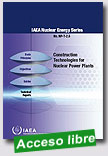 |
Construction Technologies for Nuclear Power Plants
IAEA Nuclear Energy Series, 2011, 207 p.
The objective of this publication is to describe the activities and associated technologies for construction of NPPs by assimilating global experience from a variety of construction projects. The scope involves collecting experiences from recent projects that will be relevant to new projects in the near term.
The comprehensive description of construction activities and associated construction methods given in this report is intended to be useful in planning deployment of new NPPs, both in industrialized and in developing Member States.
|
It is intended that in the future, this publication can be used and extended to: Identify activities that could be conducted by the Member States’ local labour force and domestic industry; Form the basis for examining lessons learned in recent construction projects; Plan development of human resources and industrial capability.
Note that this report does not address advancements in best practices relative to design, licensing, regulation and operations of NPPs.
Extraído de:
http://www-pub.iaea.org/MTCD/Publications/PDF/P1526_Web.pdf
|
 |
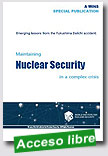 |
Emerging lessons from the Fukushima Daiichi accident: Maintaining Nuclear Security in a complex crisis
World Institute for Nuclear Security (WINS), 2011, 5 p.
This WINS Special Bulletin provides expert analysis of the potential security risk issues emerging from the major accident that crippled the Fukushima Daiichi Nuclear Power Station and identifies key recommendations for Nuclear Security Managers when dealing with low
probability and high impact risks. Our analysis is based on open source intelligence and media reporting, combined with our specialist knowledge of nuclear safety and security issues.
|
Extraído de:
http://www.wins.org/publicationfile.ashx?fid=100
|
| |
|
|
|
|
|
|
|
|
|
